The Best Soil for Your Norfolk Island Pine

Introduction to Norfolk Island Pine
The Norfolk Island Pine (Araucaria heterophylla) is a plant that has captured the hearts of plant lovers worldwide. This unique specimen offers a beauty that makes it stand out in home and landscape settings. Native to the Norfolk Island located in the South Pacific. This plant brings a touch of exotic elegance to interior spaces.
What makes the Norfolk Island Pine special is its versatility and appearance. Its tiered branches, and needle-like leaves create a miniature Christmas tree-like silhouette. It adds a touch of natural sophistication to any environment. The Norfolk Island Pine offers an intriguing addition to your plant collection.
Key highlights of the Norfolk Island Pine include:
- Unique architectural form
- Adaptability to indoor environments
- Distinctive appearance reminiscent of a miniature evergreen
- Low-maintenance care requirements
- Potential for both indoor and outdoor cultivation
Understanding the Norfolk Island Pine Species
Botanical Background and Classification
The Norfolk Island Pine is not a true pine tree. It is known as Araucaria heterophylla. This plant belongs to the Araucariaceae family. The Norfolk Island Pine is part of a group of coniferous trees with an evolutionary history. Its genetic makeup makes it a unique botanical specimen.
The plant originates from Norfolk Island. A small island located between Australia and New Zealand in the South Pacific Ocean. These trees can grow up to 65 meters (213 feet) in its natural habitat. They create dense forests with a distinctive pyramidal shape. When cultivated as a houseplant they remain much smaller. They are perfect for indoor spaces.
Botanical characteristics that distinguish the Norfolk Island Pine include:
- Symmetrical branch structure
- Soft, scale-like needles that differ from traditional pine needles
- Distinctive pyramidal growth pattern
- Ability to adapt to various environmental conditions
A Plant Unlike Traditional Pines
The Norfolk Island Pine is different from coniferous pine trees. Its unique genetic structure and appearance set it apart from traditional species. The plant features:
- Softer, more delicate needle-like leaves
- A more uniform and symmetrical growth pattern
- Different reproductive mechanisms
- Unique adaptations to its original island ecosystem
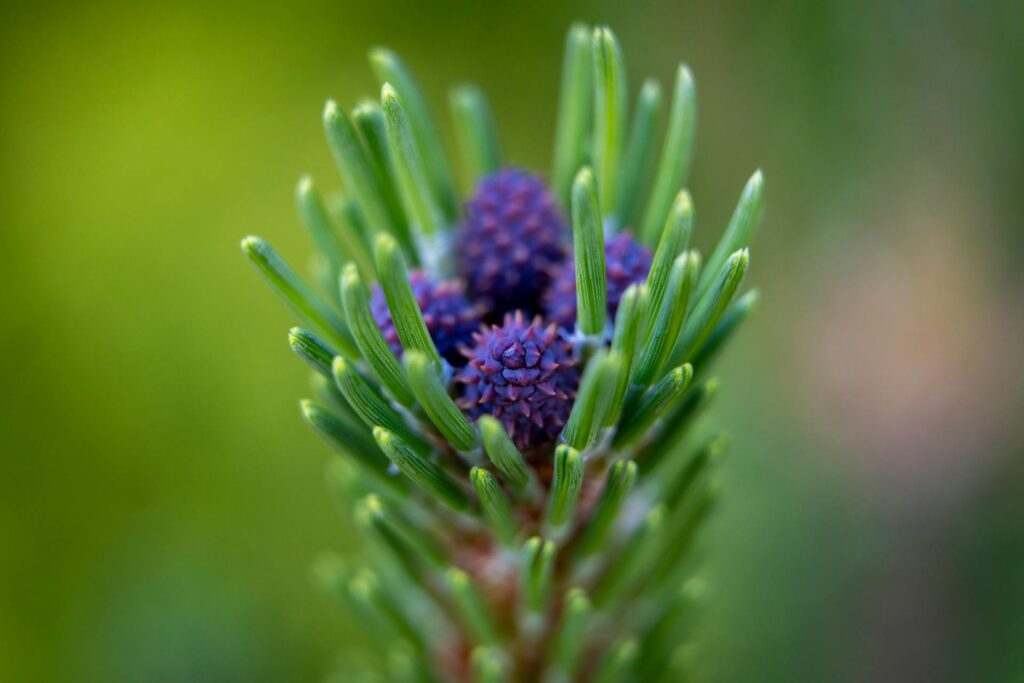
Growing Norfolk Island Pine: Indoor Cultivation Essentials
Creating the Ideal Indoor Environment
Growing a Norfolk Island Pine indoors requires understanding its specific needs. These plants thrive in bright, indirect light, and moderate humidity.
Light Requirements:
- Bright, indirect sunlight is ideal
- Avoid direct, harsh sunlight which can damage the delicate needles
- Minimum of 4-6 hours of bright, filtered light daily
- Can tolerate some lower light conditions, but growth may slow
Temperature and Humidity:
- Optimal temperature range: 60-75°F (15-24°C)
- Avoid cold drafts and sudden temperature fluctuations
- Humidity levels between 50-70%
- Use a humidity tray or occasional misting to maintain moisture
Care and Maintenance Tips
Proper care is important for maintaining a healthy Norfolk Island Pine. Here are some essential guidelines:
Watering:
- Keep soil moist but not waterlogged
- Water when the top inch of soil feels dry
- Use room temperature water
- Ensure good drainage to prevent root rot
Fertilization:
- Feed with a balanced, water-soluble fertilizer
- Apply during the growing season (spring and summer)
- Reduce fertilization in fall and winter
- Dilute fertilizer to half-strength to prevent nutrient burn
Pruning Techniques:
- Minimal pruning required
- Remove only dead or damaged branches
- Use clean, sharp pruning tools
- Avoid cutting the main trunk
Potential Challenges and Solutions
While Norfolk Island Pines can face some common issues:
Needle Discoloration:
- Yellowing needles often say overwatering
- Brown tips might suggest low humidity
- Ensure proper watering and humidity management
Pest Management:
- Watch for spider mites and scale insects
- Inspect the plant
- Use neem oil or insecticidal soap for treatment
- Maintain good air circulation
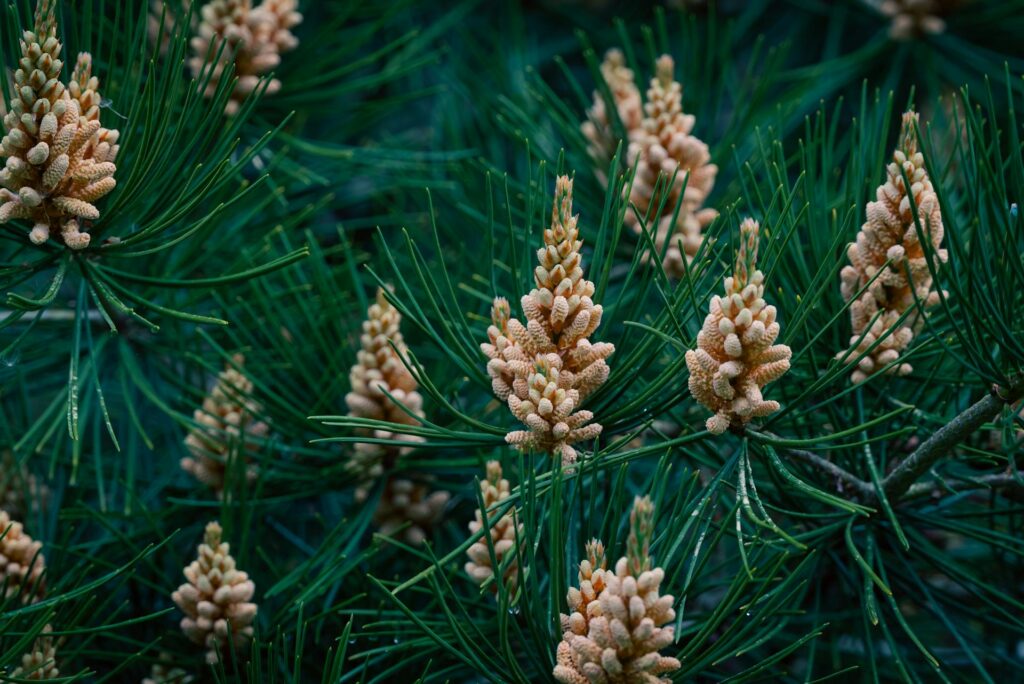
Norfolk Island Pine: Environmental Needs and Adaptation
Mimicking Natural Habitat Conditions
The Norfolk Island Pine originated from a small, subtropical island. These plants have adaptations that inform their care requirements. The original ecosystem of Norfolk Island features:
- Moderate temperatures: Consistent year-round climate
- High humidity: Influenced by oceanic surroundings
- Filtered sunlight: Protected by forest canopies
- Well-draining, nutrient-rich soil: Volcanic island terrain
When cultivating the Norfolk Island Pines recreate the natural conditions as closely as possible. Indoor environments present challenges and opportunities for copying the plant’s natural habitat.
Indoor vs. Outdoor Growing Considerations
Indoor Cultivation: Indoor environments offer conditions that need careful attention to:
- Light exposure
- Humidity levels
- Temperature consistency
- Soil composition
- Air circulation
Outdoor Cultivation: Outdoor growing is possible in specific climates:
- USDA Hardiness Zones 10-11
- Protection from direct sunlight
- Consistent warm temperatures
- Sheltered locations
- Protection from strong winds
Microclimate Requirements
Creating the microclimate involves strategic environmental management:
Ideal Placement:
- Near east or north-facing windows
- Away from heating/cooling vents
- Protected from direct drafts
- Consistent ambient temperature
Humidity Management:
- Use humidity trays
- Group with other plants
- Occasional misting
- Consider small room humidifiers

Propagation and Reproduction Challenges
The Complex World of Norfolk Island Pine Reproduction
Propagating Norfolk Island Pines presents challenges that distinguish them from other houseplants. Typical houseplants can be propagated through stem cuttings or division. These plants have specific reproductive limitations.
Propagation Difficulties:
- Seed Germination: Low success rates
- Requires specialized conditions
- Professional greenhouse techniques are necessary
- Limited viability of seeds
Professional Propagation Techniques:
- Controlled temperature environments
- Specific soil compositions
- Precise humidity levels
- Professional monitoring and care
Success Rates:
- Home propagation: Less than 10% success
- Professional propagation: 30-40% success
- Recommended to buy established plants
Seed Germination Process
The intricate process of Norfolk Island Pine seed germination involves:
- Harvesting fresh, mature seeds
- Specialized stratification techniques
- Precise temperature control (68-75°F)
- Consistent moisture maintenance
- Patience and expert care

Common Problems and Solutions
Troubleshooting Plant Health Issues
Norfolk Island Pines are resilient. They experience health challenges that need care and prompt intervention.
Identifying Health Problems:
- Yellowing Needles
- Often indicates overwatering
- This may suggest nutrient deficiencies
- Potential root stress
- Brown Needle Tips
- Signifies low humidity
- This can result from inconsistent watering
- Possible mineral buildup in soil
- Drooping Branches
- Usually indicates environmental stress
- Potential causes:
- Insufficient light
- Temperature fluctuations
- Improper watering
Pest Management Strategies:
- Regular plant inspections
- Use of neem oil treatments
- Maintaining proper air circulation
- Avoiding overwatering
- Quarantining new plants
Disease Prevention:
- Use sterile potting materials
- Ensure proper drainage
- Avoid overcrowding plants
- Maintain consistent environmental conditions
- Practice good hygiene with gardening tools
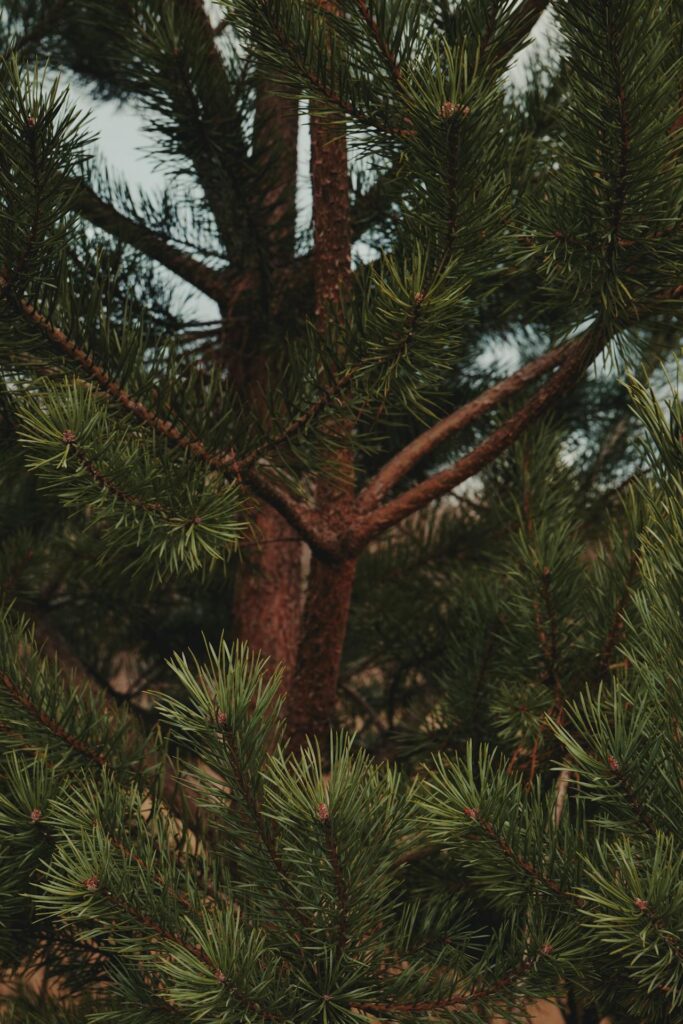
Norfolk Island Pine in Landscape and Interior Design
Decorative Versatility and Design Potential
The Norfolk Island Pine transcends its role as a houseplant. It is a sophisticated design element with remarkable versatility. Its symmetrical form makes it a choice for interior and exterior design applications.
Indoor Decorating Ideas:
- Create vertical visual interest in minimalist spaces
- Use as a statement piece in modern living rooms
- Complement contemporary and Scandinavian design aesthetics
- Position near windows to enhance natural light dynamics
- Pair with neutral-toned ceramic planters for an elegant contrast
Landscape Applications:
- Accent plants in subtropical gardens
- Focal point in tropical-themed landscaping
- Container gardening in sheltered outdoor areas
- Creating natural privacy screens
- Complementing architectural landscape designs
Holiday and Seasonal Decorating
Norfolk Island Pines offers seasonal decorating opportunities:
- Natural alternative to traditional Christmas trees
- Lightweight ornament display
- Year-round decorative potential
- Easy to decorate without damaging branch structure
- Sustainable holiday decoration option
Architectural Plant Design Considerations
Design Principles:
- Use vertical growth pattern
- Create layered interior landscapes
- Balance with complementary plant textures
- Consider mature size and growth potential
- Integrate with minimalist and organic design themes
Toxicity and Safety Considerations
Understanding Plant Safety
Norfolk Island Pines needs careful handling in households with pets and children.
Pet Safety:
- Mildly Toxic to cats and dogs
- Can cause:
- Mild gastrointestinal distress
- Potential mouth and stomach irritation
- Vomiting if significant quantities are consumed
Human Safety:
- Generally considered non-toxic
- Minimal risk of serious allergic reactions
- Potential skin irritation from handling
- It is recommended to wash hands after direct contact
Handling Precautions:
- Wear gardening gloves when pruning
- Keep away from small children and pets
- Place in elevated, secure locations
- Check for any allergic responses
Potential Allergic Reactions
While rare, some individuals might experience:
- Mild skin irritation
- Respiratory sensitivity
- Contact dermatitis
- Respiratory tract irritation
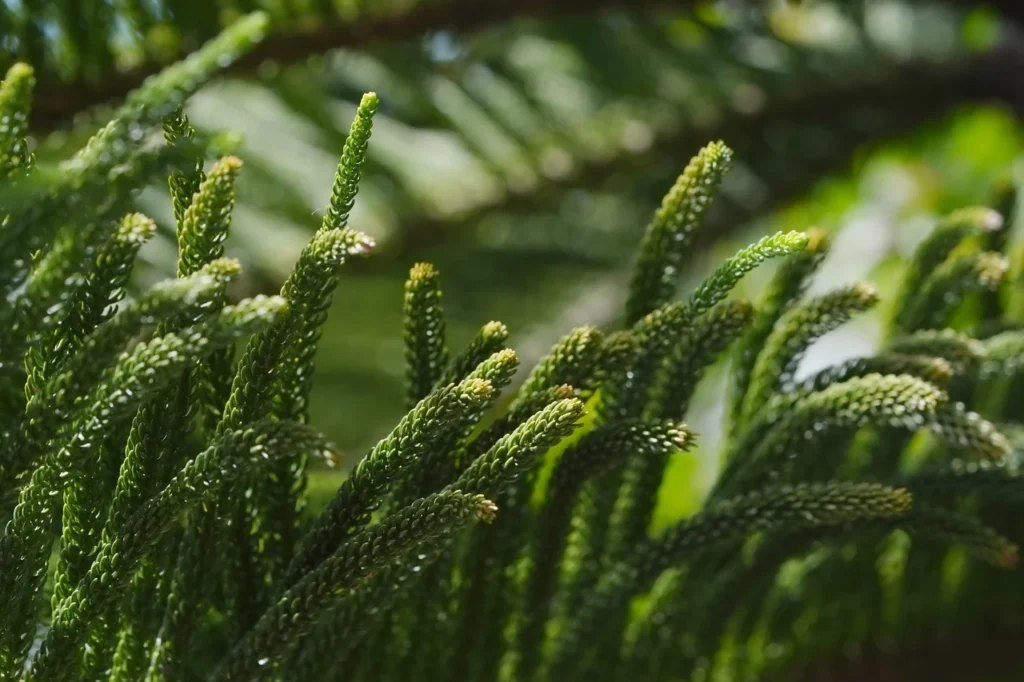
Seasonal Care Guide
Year-Round Maintenance Strategies
Spring Care Routine:
- Gradual reintroduction to active growth
- Light fertilization
- Inspect for winter damage
- Prune dead or damaged branches
- Slowly increase watering
Summer Growth Strategies:
- Maximum growth period
- Consistent moisture
- Regular fertilization
- Check for pest activity
- Provide filtered sunlight
- Maintain high humidity
Autumn Preparation:
- Reduce fertilization
- Decrease watering frequency
- Prepare for the dormant period
- Move away from drafty windows
- Maintain consistent temperatures
Winter Protection Methods:
- Minimal watering
- Avoid cold drafts
- Maintain indoor temperatures
- Reduce fertilization
- Provide indirect light
- Watch humidity levels
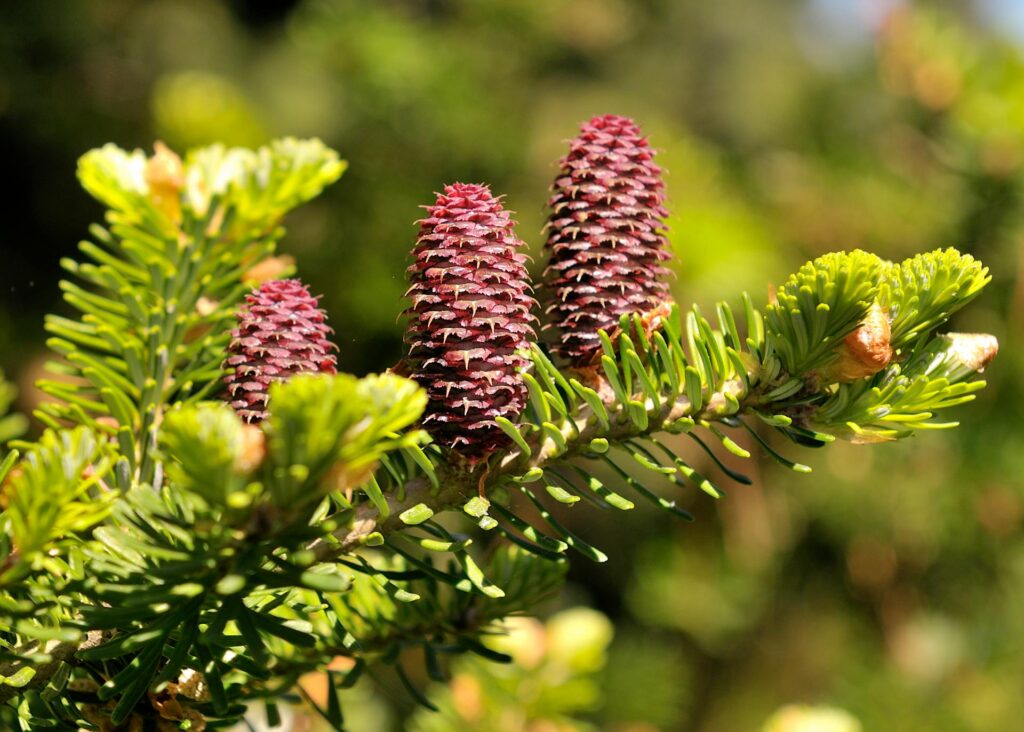
Conclusion: The Exceptional Norfolk Island Pine
The Norfolk Island Pine represents a living testament to diversity and design potential. Its characteristics and form make it an extraordinary addition to any plant collection.
Key takeaways include:
- Remarkable adaptability to indoor environments
- Distinctive aesthetic appeal
- Low-maintenance care requirements
- Versatile design potential
- Fascinating botanical history